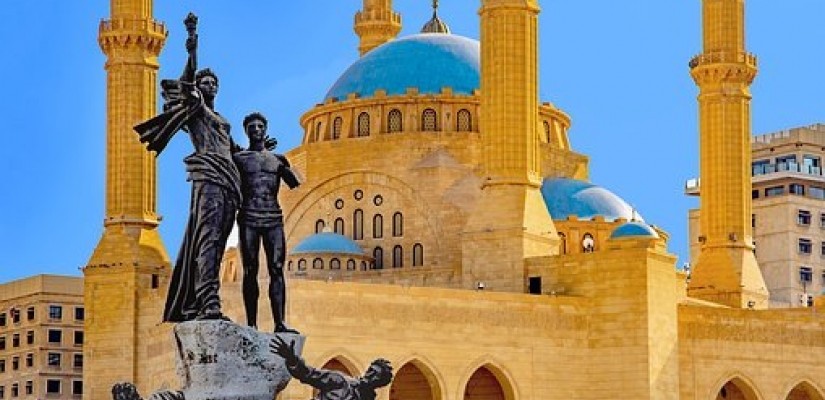Protests in Lebanon spanning two weeks in late October culminated in the resignation of the country’s Prime Minister. While the proximate cause for the protests was an increase in the tax rate applied to the use of WhatsApp, a messaging platform, the Lebanese public had long harbored dissatisfaction over the sectarian government’s corruption and failure to effectively run the economy. The protesters, who accounted for roughly a third of the population and cut across party and religious lines, aim to establish a technocratic government without ties to the past political elite that can resolve the multitude of economic problems facing the country. Unfortunately, Lebanon does not have a track record of swiftly setting up governments. For instance, electing Michel Aoun as president in 2016 took over two years. Against this already-fraught backdrop, the Trump administration on November 1 announced that it would freeze a planned $105 million aid package for the Lebanese army, which may lead to additional security risks in the country and region. The confluence of overlapping and interacting political, economic, and security risks contribute to the risk of instability in Lebanon moving forward.
The timely establishment of an effective and responsive government in the weeks ahead is far from a foregone conclusion. Protesters demand that the government undergo a drastic overhaul to fix long-lasting flaws. Many of these problems have arisen because of the power-sharing arrangement that was re-established as a result of the Taif Agreement of 1989, which ended the Lebanese Civil War of 1975-1990. This agreement codified the political power-sharing arrangement based on a sect that is used in Lebanon’s parliamentary government to this day. As a result of this agreement, representation in Parliament has been divided along sectarian lines, with each of the country’s 18 sects represented in the government. Parties must form coalitions to hold power in Parliament. For instance, the Islamist political party Hezbollah has for years stood in coalition with various Shia and Christian parties, such as president Aoun’s party Free Patriotic Movement (FPM). While the sect-based system may have promoted a relatively representative Parliament, it also led to gridlock in the government. Since Prime Minister Hariri stepped down, the future of the country’s political system has become uncertain. Three potential outcomes seem most probable: Hariri may return at the head of a technocratic cabinet-led government, Hezbollah and its coalition partners may fill government positions, or an independently led technocratic cabinet-led government may be established. Although the protesters aim for the third option, questions remain over which of the three will come to pass and how similar the chosen system will be to the past gridlock-prone system.

Lebanon’s recent political unrest has raised concerns about the future of the country’s economy. Given the possibility of an extended period without an effective government in Lebanon, many are wary of the country’s economic future. Primary risks include the possibility of government default, capital flight, and falling off the dollar peg. While Lebanon has not yet missed debt repayment targets, this trend may not continue. Government debt stands at roughly 150% of GDP, and the government is projected to run a budget deficit of 8.3% for 2019. Budget deficits have exceeded 6% for each year since 2015. The central bank has used foreign reserves to fund external debt, but foreign reserves are falling quickly and may run out in the next few years if the practice continues. While the government has not implemented an explicit policy of capital controls to maintain the peg, some residents have reported trouble withdrawing dollars and foreign transfers since banks reopened on Friday, November 1. If a new government takes power, it will need to move quickly to respond to these risks.
Lastly, the White House’s decision to prevent the transfer of a planned aid package of $105 million to the Lebanese armed forces has the potential to lead to adverse strategic and political consequences. Over the past 15 years, the US has provided over $2 billion in military aid to Lebanon. The Lebanese Armed Forces are composed of a diverse group of soldiers from Lebanon’s various sects and act as a counterweight against militant extremists in the country, such as those with ties to Hezbollah. Hezbollah shares close ties with the Iranian government. If the US suspends monetary assistance and ties with the Lebanese Armed Forces for an extended period of time, other countries, such as Iran, Syria, or Russia, may step in to fill the void. Given the existing budget deficit and the importance of the Lebanese Armed Forces in the country, freezing the $105 million in aid could exacerbate existing political tensions and risks.
While many may applaud the aims of the protesters in Lebanon and wish for a more representative and responsive government, the transition process holds the potential for significant risks and uncertainties. Negotiations between the protesters and incumbent political parties over a transitional government could lead to significant changes in the weeks or months ahead.
